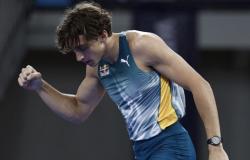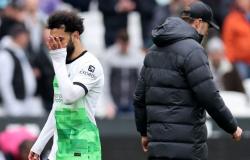When Pep Guardiola the footballer was searching for a club in 2005, he spent a drizzly afternoon craning his neck as Manchester City and West Bromwich Albion played out a goalless draw consisting largely of head tennis.
“I was squirming because it was quite a direct game,” said football agent Tony Sharkey, who arranged Guardiola’s visit to Manchester, on a BBC documentary about City’s manager earlier this year. “David James launching it for flick-ons and completely bypassing the midfield.”
This was the safety-first fare we once knew as English football, before Guardiola’s gospel of short passes, ball-playing goalkeepers and inverted full-backs guided the Premier League to tactical enlightenment. Or so the story goes.
Guardiola has inspired disciples such as Arsenal manager Mikel Arteta, his opponent in Sunday’s pivotal game between two title contenders. It will be billed as the meeting of two football aesthetes, who want the ball kept on the carpet at all costs.
However, this belies the extent to which both City and Arsenal are willing to mix it with long balls forward when the time is right. Both have goalkeepers who excel at precise, long-range distribution, although City will be without first-choice Ederson. In Erling Haaland and Kai Havertz, both have tall forwards who offer aerial presence and the chance to play directly from A to B.
City and Arsenal are the two best defenses in the Premier League, the two most compact units from front to back. With world class ball-winners Rodri and Declan Rice patrolling congested central areas, it could prove difficult for either team to play through the other. So why not go over?
Sunday’s game could be decided by which team deals best with the long ball, as well as the crucial second-ball contests that result.
City adapted to Arsenal and delivered knockout title blows
Man City’s two league wins against Arsenal last season were decisive and on both occasions they found joy going long. In fact, despite City being the better and stronger side, it was Guardiola who adapted to Arsenal.
Ranking City’s 38 league games last season, their two fixtures against Arsenal featured in the top four for percentage of passes played long. City’s 3-1 victory at the Emirates stands out, with an uncharacteristic 17 percent of passes played long. City enjoyed just 36 per cent possession that night and completed just 72.28 per cent of their passes.
City struggled to play through Arsenal’s press which flips from a zonal 4-4-2 into an intense, man-to-man approach after certain triggers. With Arsenal man-to-man against City, the spare player was Ederson and Haaland had a centre-back isolated. Guardiola prizes possession, but also wants his team to find the area where they have an advantage. On this occasion, it was the player furthest from the ball.
“Erling helped us a lot because being man-to-man against them, so aggressive, the only man free is the keeper and of course long balls against Saliba and Gabriel are not easy,” Guardiola said after that game last February.
For City’s first goal at the Emirates, Arsenal ushered the ball back to Ederson who hooked a long ball forward with his left foot.

Haaland was in a one-on-one duel with William Saliba on the halfway line. The Arsenal defender won the first contact, but was under sufficient pressure that he could only glance the ball into the right-back zone.


This put Takehiro Tomiyasu in a battle to recover against Jack Grealish, but despite the Arsenal full-back winning the race, he was panicked into a poor backpass.


Kevin De Bruyne got there first and looped a superb first-time finish over Aaron Ramsdale. This goal shows the danger is not over after winning the first header; it is about managing the second ball and avoiding a turnover within seconds of winning the ball back.


City and De Bruyne also exposed Arsenal with a long ball forward for their opening goal at the Etihad.
Playing out from the back and direct play are not necessarily mutually exclusive. An old adage was that you ‘played long to play short’, turning the opposition defense early to make them drop off and give players time on the ball. City though, in common with many teams, are fond of playing short to play long, tempting the opposition to press before clipping the ball over them.
Eager to make a fast start in a decisive game in April, Arsenal tried to jump out of the traps and press City when Ederson played the ball short and square to John Stones. Note the position of Martin Odegaard, pressuring Stones, and Granit Xhaka, ready to press Rodri. That is two of Arsenal’s midfield three committed high up the pitch.


Haaland wins the first ball this time, cushioning the ball down in a duel against Rob Holding.


De Bruyne wins the race against a laboring Thomas Partey, the only Arsenal midfielder in the picture after Xhaka and Odegaard had pushed on in the first phase of the move. De Bruyne was clear and his right foot did the rest.


Arsenal can now give City a taste of their own medicine
With William Saliba available again instead of Holding, and the rangier Rice in midfield rather than a semi-fit Partey, Arsenal should be better placed to deal with City’s direct play, although they are sweating on Gabriel’s availability.
They also have the option to play longer themselves, with Havertz a target their forward line lacked last season. Goalkeeper David Raya can find him and if the game becomes a second-ball fight in midfield, few are better than Rice.
Last season, Arsenal ranked bottom of the Premier League for percentage of long goalkeeper passes completed at just 24 per cent. This season, they rank a more respectable 10th at 39 percent. City completed a league-best 55 percent of long goalkeeper passes last season, and are near the top of the rankings again at 49 percent. Opta defines long balls as attempted passes of 32 meters or longer.
Arsenal’s winning goal against City at the Emirates in October came from a fairly rudimentary piece of football, a move unlikely to have been rehearsed on the training ground.
Partey stood up a long diagonal pass into the penalty area, where Arsenal had Tomiyasu and Havertz up against the City defense like a pair of old school English centre-forwards. Tomiyasu won the flick on, Havertz set the ball back for Gabriel Martinelli and the Brazilian’s deflected shot made the Emirates erupt.
Martinelli also scored the game’s decisive goal in Arsenal’s 3-1 win over Liverpool. Virgil van Dijk and Alisson were to blame of course, but the danger came from Gabriel sending a long ball forward for Martinelli to chase. Neither of these goals were picturebook football, but without them Arsenal might be out of title contention.
Both teams’ vulnerability to long, straight balls
Not only do City and Arsenal have the tools to threaten from long balls forward; both defenses look occasionally skittish when asked to deal with route one tactics. This is partly due to the dominance City and Arsenal exert, with defenders trusted to cope on the halfway line in space without having their hands held. Any slip can prove fatal.
At Brentford, City conceded straight from a goal kick. Ivan Toney and Neal Maupay both lurked behind City’s back four in ‘offside’ positions, aware of the fact that you cannot be offside directly from a goal kick. Once the ball was played forward, Toney attached himself to Nathan Ake and used his upper-body strength to hold him off, allowing the ball to run through for Maupay. City were slow to work out Brentford’s ploy and Maupay converted.
Manchester United’s goal at the Etihad was similar, with Andre Onana finding Bruno Fernandes’ run beyond the City defence. There were appeals for offside but Ake was playing Fernandes on. The United midfielder set the ball back for Marcus Rashford to score a screamer, from which City recovered.
There have also been warning signs for Arsenal. In the first minute of an otherwise exemplary performance against Liverpool, Arsenal were guilty of letting a long ball bounce. Van Dijk launched the ball forward, Gabriel backed off and allowed Cody Gakpo to control the duel, and Liverpool could well have scored first had Diogo Jota’s touch not deserted him.
Brentford’s front two of Ivan Toney and Yoanne Wissa also showed early forward balls can unsettle Arsenal, even with Saliba and Gabriel around. On this occasion, Gabriel got caught under a bouncing ball in the channel, allowing Wissa to get away from him. The Arsenal defender had to pull Wiss back at the expense of a yellow card.
Later in the half, Gabriel contests a goal kick against Toney, with Rice dropping into his left centre-back position. Toney brings the ball under his spell and, with Jorginho attracted, releases Mathias Jensen into space with Rice otherwise engaged. Arsenal survived, but swap Jensen for De Bruyne and Wissa for Haaland and the result could be different.
Like every game between Guardiola and Arteta, Sunday will see move and counter-move, and much dissection of each team’s build-up patterns and pressing schemes. Do not be surprised though, if the contest comes down to which team best masters the moments when the ball is not under control.
Broaden your horizons with award-winning British journalism. Try The Telegraph free for 3 months with unlimited access to our award-winning website, exclusive app, money-saving offers and more.













